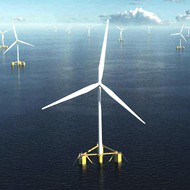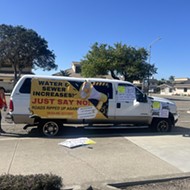[
{
"name": "Promo Temp Targeted",
"id": "PromoTempTargeted",
"class": "inlineCenter",
"insertPoint": "4",
"component": "15511697",
"requiredCountToDisplay": "0"
},
{
"name": "Ad - Medium Rectangle CC01 - 300x250 - Inline Content",
"class": "inlineCenter",
"insertPoint": "8",
"component": "15582119",
"requiredCountToDisplay": "12"
},{
"name": "Ad - Medium Rectangle LC01 - 300x250 - Inline Content",
"class": "inlineCenter",
"insertPoint": "18",
"component": "15582122",
"requiredCountToDisplay": "22"
},{
"name": "Ad - Medium Rectangle 9 - 300x250 - Inline Content",
"class": "inlineCenter",
"insertPoint": "28",
"component": "15582121",
"requiredCountToDisplay": "32"
}]
Revving up the ongoing controversy over vehicle recreational use of the Oceano Dunes are two new reports dealing with the future of the beach park. The thick stacks of paper add fuel to continuing arguments over vehicles and Arroyo Grande Creek, and throw a wrench into the entire funding mechanism for the off-highway vehicle area.
# One report, prepared for California State Parks by Condor Environmental Planning Services, Inc. of Ventura at a cost of $192,235, looked at alternative access routes for the Oceano Dunes State Vehicular Recreation Area. The idea was to allow vehicle access to the camping areas on the beach and the Off Highway Vehicle riding area in the dunes, without the need to drive through the mouth of Arroyo Grande Creek.
Six different access corridors and two options for constructing a portable beach bridge over the creek were evaluated in the hefty report. Its conclusion: Continued use of Grand Avenue and Pier Avenue at the north end of the park and driving across the creek mouth "is the environmentally preferred alternative."
The other new report concerning the Oceano Dunes focuses on a completely different topic. A state study on gas taxes the main source of funds for Oceano Dunes and other state vehicular recreation areas has concluded that the allocation formula is outdated. It recommends that gas-tax funding for the state's vehicular parks should be cut in half, from $56.8 million statewide to about $27.1 million.
It's "premature to speculate" about what the report might mean for the $6.1 million annual operating budget at Oceano Dunes, according to Oceano Dunes District Superintendent Andrew Zilke.
"More important than numbers is what we do with it. We're committed two-fold: to maintaining sustainable off-highway vehicle recreation, and to promoting environmental resource protection," Zilke said in an interview.
"This form of recreation has a future. It's growing astronomically," he added.
Oceano Dunes State Vehicular Recreation Area receives more than two million visitors a year. It's the only state park in California where driving on the beach is allowed.
To cut the division's funding in half "would be irresponsible and does not make sense to us," Deputy Director of State Parks Off-Highway Motor Vehicle Division Daphne Greene said in a media release.
"We think a closer examination of this report and how we fund the program is needed before we take any action," she wrote.
The Off-Highway Fuel Tax Study, published Dec. 20, was requested by the state legislature to see how revenues from California's 18-cent-a-gallon gas tax should be allocated. It was prepared for the State Parks division by a research team led by Louis Browning of ICF in San Francisco.
A complex formula now used by the state to determine what percentage of the fuel tax revenue should go toward off-highway recreation is outdated and faulty, the study concluded.
For example, the allocation formula relies on 1990 statistics that showed that 36 percent of 4-wheel drive vehicles in California are used for off-road recreation, whereas today only around 11 percent of 4WDs ever leave the pavement, research showed.
Gas taxes are allocated for off-highway vehicle recreation based partly on assumptions made in 1990 about the numbers of unregistered motorcycles, 4-wheel drive vehicles, and ATVs used off-road. The assumption has been that for every registered motorcycle, there are around six unregistered motorcycles for every registered 4-wheel drive, there are nearly eight unregistered and for every registered ATV, there are 2.5 unregistered.
The new study indicates that these numbers are no longer correct, especially after "significant law enforcement" has forced owners to register many more vehicles since 1990.
In this model, instead of subtracting a motorcycle from the non-registered list and adding it to the registered, one motorcycle is added to the registered list and six "erroneously appear" as unregistered, the study pointed out.
"This inflates the nonregistered counts when they should be decreasing," it stated.
With nearly 84 percent of the funding for the State Parks Off-Highway Motor Vehicle Division coming from fuel tax revenues, state parks officials are urging caution rather than changes. They say the study was statistically questionable, with an unusually high margin of error of 17 points, because only 15,000 state residents were randomly surveyed.
"The only prudent course of action is to call for a 'time out' to begin an open and public process of examining the very premise of how this program is funded," Deputy Director Greene said.
The other recent Oceano Dunes report on alternative access routes to the beach is also facing some criticism, after concluding that the existing access points from Grand and Pier avenues are "environmentally preferred" compared to the various impacts of creating a new road.
"The state agreed to study alternatives for access because state policy is to 'avoid crossing Arroyo Grande Creek.' The definition of 'avoid' is clear to me. But we were pretty much expecting they'd come back with the status quo," said Andrew Christie of the Sierra Club's Santa Lucia Chapter.
A Sierra Club lawsuit led to a court-ordered settlement agreement signed in January 2005, which mandated the study of alternative access routes to help protect sensitive species.
Christie and other coastal advocates were disappointed that the study didn't look at the environmental impacts of driving a motor vehicle on the beach.
"It's what they left out of the report that's important," he said, referring to the absence of scientific study on the impacts to the endangered tidewater goby recently discovered in Arroyo Grande Creek.
"I'm uncomfortable with having tens of thousands of vehicles crossing Arroyo Grande Creek as the baseline. The baseline should be a free-running creek," said Gordon Hensley of SLO Coastkeepers, who's a member of a technical review team on the Oceano Dunes.
For District Superintendent Zilke, the Alternative Access Study contains a thorough analysis of alternatives as well as important data about the dunes.
"The document puts all the information on flora, fauna, and hydrology in one place. It has a great deal of potential to guide us to the future," said Zilke, who expected that people would criticize the access study as they did the fuel-tax study.
"No one is neutral on off-highway vehicle recreation," he added. "They're either passionately for it, or passionately against it. It would be nice to find some happy ground."
Freelance journalist Kathy Johnston may be reached at [email protected].
Latest in News
Readers also liked…
-

SLO police identify alleged driver who hit and killed couple
Dec 22, 2022 -

When the levee breaks: Oceano residents, county officials walk a tightrope of regulations to manage Arroyo Grande Creek, which some say led to the levee's failure in January
May 18, 2023 -

Cal Poly report highlights offshore wind's potential to spur green energy transition
Jun 8, 2023









